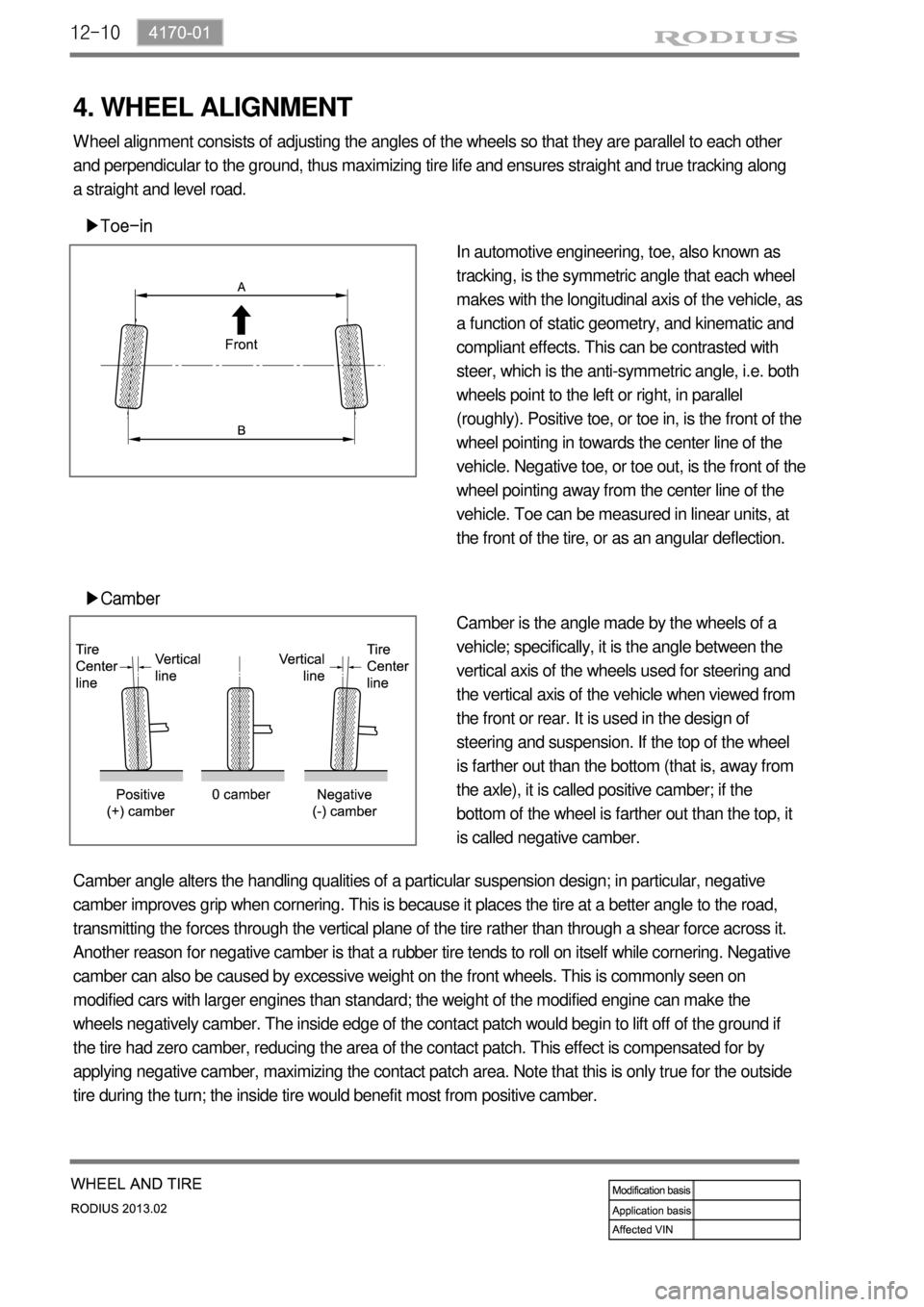12-10
4. WHEEL ALIGNMENT
▶Toe-in
▶Camber
In automotive engineering, toe, also known as
tracking, is the symmetric angle that each wheel
makes with the longitudinal axis of the vehicle, as
a function of static geometry, and kinematic and
compliant effects. This can be contrasted with
steer, which is the anti-symmetric angle, i.e. both
wheels point to the left or right, in parallel
(roughly). Positive toe, or toe in, is the front of the
wheel pointing in towards the center line of the
vehicle. Negative toe, or toe out, is the front of the
wheel pointing away from the center line of the
vehicle. Toe can be measured in linear units, at
the front of the tire, or as an angular deflection.
Camber is the angle made by the wheels of a
vehicle; specifically, it is the angle between the
vertical axis of the wheels used for steering and
the vertical axis of the vehicle when viewed from
the front or rear. It is used in the design of
steering and suspension. If the top of the wheel
is farther out than the bottom (that is, away from
the axle), it is called positive camber; if the
bottom of the wheel is farther out than the top, it
is called negative camber. Wheel alignment consists of adjusting the angles of the wheels so that they are parallel to each other
and perpendicular to the ground, thus maximizing tire life and ensures straight and true tracking along
a straight and level road.
Camber angle alters the handling qualities of a particular suspension design; in particular, negative
camber improves grip when cornering. This is because it places the tire at a better angle to the road,
transmitting the forces through the vertical plane of the tire rather than through a shear force across it.
Another reason for negative camber is that a rubber tire tends to roll on itself while cornering. Negative
camber can also be caused by excessive weight on the front wheels. This is commonly seen on
modified cars with larger engines than standard; the weight of the modified engine can make the
wheels negatively camber. The inside edge of the contact patch would begin to lift off of the ground if
the tire had zero camber, reducing the area of the contact patch. This effect is compensated for by
applying negative camber, maximizing the contact patch area. Note that this is only true for the outside
tire during the turn; the inside tire would benefit most from positive camber.
